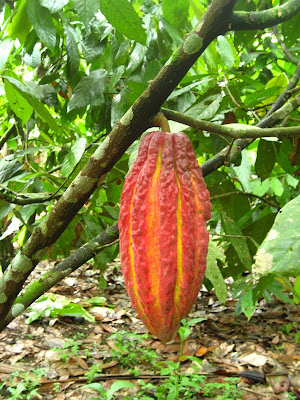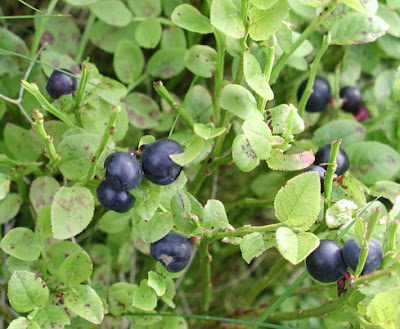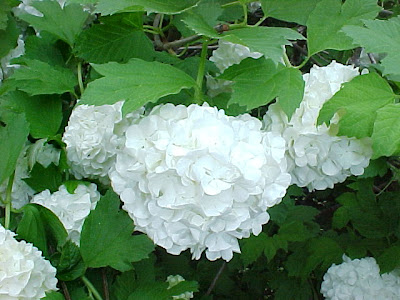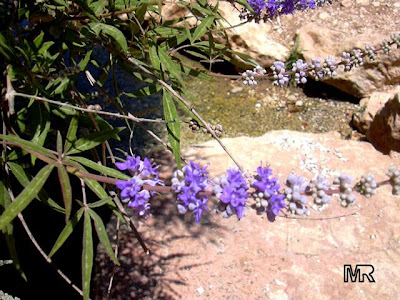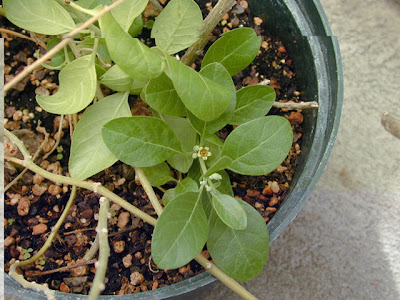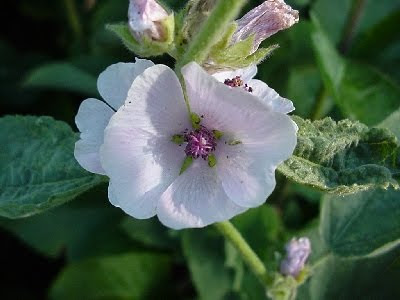30.12.09
Butterbur / Petasites hybridus
Formerly used to treat plague, butterbur has long been used in Europe as a cough and cold remedy, and for stomach and gall bladder problems. Clinical trials suggest butterbur extract provides effective relief for migraines and hay fever, and the extract is now commonly available over the counter.
27.12.09
Parsley / Petroselinum crispum
A useful food at any time, parsley is rich in a number of readily absorbable nutrients, including vitamin C and phytoestrogens, making it a valuable supplement, particularly during menopause. Medicinally, the root is preferred, having a distinct benefit on the urinary tract and in rheumatic problems.
24.12.09
Plantain / Plantago major, P. lanceolata
Known in Gaelic as “the healing herb,” plantain is a versatile herb that will benefit many conditions. Mostly used to support and strengthen mucous membranes throughout the body, plantain counters infection, reduces mucous membrane secretions, and supports tissue repair.
22.12.09
Rose / Rosa spp.
Rosewater, distilled from the petals, soothes and tones the skin. A syrup from the hips of the dog rose (R. canina) is given to children to improve resistance to infection.
20.12.09
Rhubarb / Rheum officinalis
A well-tolerated and moderately powerful laxative, rhubarb exerts a positive influence on the liver, gallbladder, and intestines. At a low dose, its astringent actions predominate to control diarrhea, while at normal dose, it acts as an irritant laxative.
18.12.09
Golden root, Arctic root / Rhodiola rosea
Found in mountainous regions and tundra as far north as the Arctic, golden root has benefits similar in many ways to ginseng. A key remedy for long-term stress and physical and mental fatigue, it supports the body’s stress response.
16.12.09
Blackcurrant / Ribes nigrum
The tart, crisp flavor of blackcurrant reflects the fruit’s high vitamin C content and marked antioxidant activity. Long given to children to protect them from colds and throat infection, the fruit, juice, and extracts are thought to have significant anti-inflammatory and antiviral activity.
14.12.09
Rosemary / Rosmarinus officinalis
Few herbs are as well known as rosemary, especially for its distinctive aroma. Traditionally used to strengthen memory and recall, it is frequently taken to aid study and exam performance, and to ward off mental exhaustion.
12.12.09
Sheep’s sorrel / Rumex acetosella
A small dock-type plant, sheep’s sorrell is rarely used as a medicine on its own. Its chief therapeutic use lies in its role as the principal remedy in the Essiac formula.
10.12.09
Elder / Sambucus nigra

Although poorly researched, elder is a safe and effective domestic remedy for ear, nose, and throat problems, whose traditional use in Europe goes back to pre-classical times. The creamy white flowers are often collected to make wine, but the tincture or hot infusion are therapeutically more effective.
8.12.09
Schisandra, Wu wei zi / Schisandra chinensis
4.12.09
Limeflower, Linden blossom / Tilia spp.
Commonly planted in gardens and parks, the lime or linden tree bears flowers that perfume the air on summer evenings. The delicate scent acts much in the same way as the infusion made from the flowers, soothing troubled states of mind and relieving tension headaches, migraines, and sinus congestion.
2.12.09
Linseed or flax oil
Flax or linseed oil contains uniquely high levels (typically around 55 percent) of a-linolenic acid, an omega-3 polyunsaturated fatty acid similar to those found in fish oils. Plant-derived omega-3 oils are not so readily available for use by the body as fish oils, but nevertheless provide similar health benefits. All omega-3 oils have a protective activity on the heart and circulation and against cancer.
29.11.09
Puncture vine, Caltrops / Tribulus terrestris
This plant has been used for at least 2,000 years in both western and eastern traditions as a remedy for kidney and bladder problems, particularly kidney stones. It also possesses a longstanding reputation as a tonic and aphrodisiac.
27.11.09
Feverfew / Tanacetum parthenium
25.11.09
Theobroma cacao / Cacoa, Chocolate
23.11.09
Milk thistle

Silybum marianum syn. Carduus marianus
Extensively researched over the last 30 years, milk thistle is a powerful friend of the liver that protects against poisoning, toxicity, and inflammatory damage. It stimulates liver repair and regeneration, inhibits inflammatory processes resulting from infection, and promotes effective liver detoxification.
21.11.09
Thyme, Common thyme / Thymus vulgaris
A classic kitchen herb, thyme makes a refreshing tea that counters infection and tones the
respiratory system. Useful in almost any problem affecting the ear, nose, throat, and chest, thyme disinfects the air passages, soothes coughing, and stimulates clearance of phlegm.
19.11.09
Thuja, Tree of life / Thuja occidentalis
Native Americans employed thuja for conditions such as headache, fever, and rheumatism, and burned it as a cleansing “smudge.” Thuja’s main application is for warts, though it helps in other infectious conditions as well—notably sinusitis, tooth abscesses, bronchitis, cystitis, and fungal infections.
18.11.09
Linseed - Other uses
Respiratory disorders Taken in the form of soaked seed as described for digestive problems, linseed soothes the chest and airways and can prove helpful in conditions such as chronic or irritable coughs, hoarseness, bronchitis, pleurisy, and emphysema. The seed may also be applied to the chest wall as a poultice (see Topical use, below) to relieve congestive bronchitis.
Topical use Linseed also finds use when applied locally to the skin as a poultice. Put warm soaked seed in gauze or muslin and hold or bind in place on burns, bites and stings, boils, and hemorrhoids. A warm poultice can also be used to “draw” splinters and boils, the mucilage in the seed soaking up fluids and waste products.
Other uses Although research is so far not conclusive, there are indications that linseed can prove to be a useful remedy in a remarkably wide range of serious health problems. It appears to have a soothing effect on the kidneys and may be helpful in kidney disease. Within the gut it helps to prevent absorption of fats and sugars, and makes a good addition in both cholesterol-lowering regimes and diet-controlled diabetes. Partly as a result of its high phytoestrogen content, linseed appears to have important cancerpreventative activity, particularly against estrogen-dependent cancers such as breast cancer. It is thought to reduce re-absorption of estrogens within the colon, and is likely to prove useful in the treatment of colon cancer. In the above conditions, use linseed only after consulting your doctor or herbal practitioner.
Topical use Linseed also finds use when applied locally to the skin as a poultice. Put warm soaked seed in gauze or muslin and hold or bind in place on burns, bites and stings, boils, and hemorrhoids. A warm poultice can also be used to “draw” splinters and boils, the mucilage in the seed soaking up fluids and waste products.
Other uses Although research is so far not conclusive, there are indications that linseed can prove to be a useful remedy in a remarkably wide range of serious health problems. It appears to have a soothing effect on the kidneys and may be helpful in kidney disease. Within the gut it helps to prevent absorption of fats and sugars, and makes a good addition in both cholesterol-lowering regimes and diet-controlled diabetes. Partly as a result of its high phytoestrogen content, linseed appears to have important cancerpreventative activity, particularly against estrogen-dependent cancers such as breast cancer. It is thought to reduce re-absorption of estrogens within the colon, and is likely to prove useful in the treatment of colon cancer. In the above conditions, use linseed only after consulting your doctor or herbal practitioner.
17.11.09
Comfrey / Symphytum officinale
16.11.09
Sarsaparilla / Smilax spp.
15.11.09
Saw palmetto / Serenoa repens
14.11.09
Lemon / Citrus limon
One the most useful home remedies, lemon works well in a host of common complaints. The traditional drink of lemon and honey can be spiced up with ginger and garlic to make a potent brew for colds, flu, coughs, and digestive disorders. Overall, the fruit improves resistance to infection.
13.11.09
Skullcap / Scutellaria lateriflora
12.11.09
Black cohosh
Cimicifuga racemosa syn. Actaea racemosa
Recent interest in black cohosh as an alternative to hormone replacement therapy (HRT) has led to a dramatic increase in its popularity, especially as a treatment for menopausal symptoms. A Native American remedy, black cohosh has always been seen as a herb for women’s ailments.
10.11.09
German Chamomile
Chamomilla recutita syn. Matricaria recutita
Known more as a pleasant-tasting tea than as a medicine, chamomile provides effective treatment for health problems as diverse as indigestion and acidity, travel sickness, cramps, inflamed skin, and poor sleep. Make sure to use good-quality chamomile to achieve the best results.
Known more as a pleasant-tasting tea than as a medicine, chamomile provides effective treatment for health problems as diverse as indigestion and acidity, travel sickness, cramps, inflamed skin, and poor sleep. Make sure to use good-quality chamomile to achieve the best results.
9.11.09
Cinnamon / Cinnamomum verum
8.11.09
Helonias, False unicorn root
6.11.09
Medicinal uses of Dan shen, Asian red sage

Part used Root
Key actions Anticoagulant • Lowers blood pressure • Sedative • Tonic for heart and circulation
Heart tonic Similar in some respects to hawthorn (Crataegus spp.), dan shen increases blood flow through the coronary arteries and has a marked relaxant action on the circulation to the heart, making it a key remedy for angina and a weak or under-performing heart. Dan shen is best taken on the recommendation of an herbal or medical practitioner.
High blood pressure and poor peripheral circulation Dan shen relaxes arterial circulation and thins the blood, both factors that contribute to a lower blood pressure and stronger circulation to the hands and feet.
Other uses The herb has strong anticoagulant activity—seek professional advice if taking blood-thinning medication or where a tendency toward bleeding or bruising exists.
4.11.09
Medicinal uses of Yellow dock

Parts used Root • Leaf (topically)
Key actions Detoxifier • Laxative
Chronic skin problems Yellow dock is best used in combination with other herbs rather than on its own. It fits well in formulas that contain other “blood cleansers” such as burdock (Arctium lappa) to support bowel clearance and liver detoxification. Yellow dock is called for in conditions involving chronic toxicity, including skin disorders such as acne and boils, eczema, and psoriasis. Often the best approach is to take small amounts regularly over several months, promoting gradual but effective detoxification. Other types of chronic illness that involve poor elimination, like swollen glands and throat infection, can also benefit from the root’s cleansing activity.
Other uses Yellow dock combines well with nettle (Urtica dioica) in allergic and rheumatic conditions. Both herbs also contain appreciable levels of iron and can be used as a natural iron supplement in mild cases of anemia.
3.11.09
Sage, Spanish sage / Salvia officinalis, S. lavandulifolia
In 1551, the English herbalist William Turner noted that sage “restores natural heat ... comforts the vital spirits ... helps the memory, and quickens the senses.” Such praise is not misplaced for sage, which is truly a versatile and effective tonic.
2.11.09
Dandelion / Taraxacum officinalis
 One of nature’s most versatile remedies, dandelion is both a nutritious salad vegetable and a detoxifying remedy for the liver and kidneys. Loved by herbalists for its gentle cleansing effect, dandelion root finds use in toxic states of all kinds, including chronic skin disorders and recurrent infection.
One of nature’s most versatile remedies, dandelion is both a nutritious salad vegetable and a detoxifying remedy for the liver and kidneys. Loved by herbalists for its gentle cleansing effect, dandelion root finds use in toxic states of all kinds, including chronic skin disorders and recurrent infection.
1.11.09
Yellow dock / Rumex crispus
A common weed and wayside plant, yellow dock has a deep taproot that draws up iron and other minerals from the soil, presenting them in an accessible form for absorption. The root is therefore prescribed in cases of iron-deficiency anemia, although its main use is for sluggish bowels and mild constipation.
31.10.09
Dan shen, Asian red sage / Salvia miltiorrhiza
A cousin of garden sage, dan shen is the Chinese remedy for heart and circulation, and has been used for over 2,000 years. The root has an impressive range of activity on the cardiovascular system, benefiting conditions such as high blood pressure, poor peripheral circulation, and heart failure.
30.10.09
Willow bark, White willow / Salix alba
An ancient remedy for aches and pains, fevers, and rheumatic conditions, willow bark contains aspirin-like substances. It is often thought of as the herbal equivalent of aspirin, but its mode of action is only partly the same—it cannot be used as a straightforward aspirin replacement.
Bilberry, Blueberry / Vaccinium myrtillus
29.10.09
Valerian / Valeriana officinalis
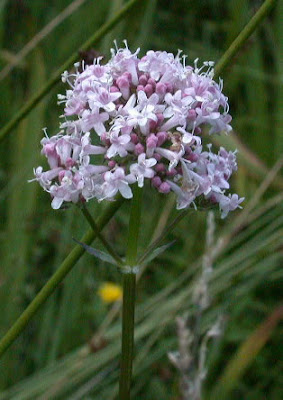 Used wherever nervous tension, overactivity, or an inability to relax are present, valerian’s gently sedative action helps to soothe and slow a nervous system that is beginning to spin out of control. It is one of the first herbs to consider when a remedy is needed to ease anxiety and panic attacks.
Used wherever nervous tension, overactivity, or an inability to relax are present, valerian’s gently sedative action helps to soothe and slow a nervous system that is beginning to spin out of control. It is one of the first herbs to consider when a remedy is needed to ease anxiety and panic attacks.
28.10.09
Linseed, Flax - medicinal uses
Part used Seed
Key actions Antioxidant • Demulcent • Estrogenic • Laxative • Nutritive
Food supplement, menopausal symptoms Ground or cracked seed (untreated seed is not absorbed) makes an excellent addition to the diet: take 1–2 tablespoons a day with muesli, breakfast cereal, or yogurt. Since the seed soaks up large quantities of liquid, drink a large glass of water at the same time. The a-linoleic acid and omega-3 oil content in the seed is similar to fish oils, although less biologically available. High levels of phytoestrogens make linseed a useful supplement for menopausal symptoms such as hot flashes and headache. Store ground or cracked seed in an airtight container in the refrigerator to prevent the seed oils going rancid. Use within two to three weeks.
Digestive problems An excellent bulk laxative, linseed is a safe and frequently effective remedy for chronic constipation. Soak 1 tablespoonful of seed in at least 5 times its volume of warm water. Leave for a few hours, then swallow, preferably drinking additional water. The resulting jelly-like brew will often prove helpful for constipation and can also relieve acid indigestion and diarrhea. Long-term problems such as acid reflux and esophagitis, peptic ulcer, and chronic constipation are likely to need ongoing treatment with linseed.
27.10.09
Raspberry - medicinal uses
Part used Leaf
Key actions: Aids preparation for childbirth • Antidiarrheal • Astringent
To aid preparation for childbirth Take raspberry leaf as an infusion or capsule on a daily basis for the last three months of pregnancy, and freely during labor to ease contractions. The normal daily dose is 1–2 cups of tea.
Heavy menstrual bleeding Raspberry leaf can help control heavy menstrual bleeding, combining well with yarrow (Achillea millefolium) to reduce blood loss. It is sometimes taken to relieve premenstrual symptoms and period pains.
Other uses With its strong astringent action, an infusion of the leaves makes a gentle-acting and effective remedy for diarrhea and loose bowel movements in children. It is equally useful as a gargle for sore throats and a lotion for sore eyes.
26.10.09
Other uses of Birch
favorite Scandinavian remedy, birch twig bundles are used in saunas and steam baths to penetrate the skin and muscles in order to stimulate sweating, invigorate, and relieve tender and aching muscles. Birch oil, extracted from the leaves and twigs, is a traditional northern European product, commonly used in external applications for rheumatic aches and pains.
25.10.09
Vervain / Verbena officinalis
24.10.09
Cramp bark, Guelder rose / Viburnum opulus
23.10.09
Heartsease, Wild pansy / Viola tricolor
22.10.09
Mistletoe / Viscum album
21.10.09
Chaste berry / Vitex agnus-castus
20.10.09
Medicinal uses of Birch
Parts used Bark: Leaf
Key actions: Anti-inflammatory, Astringent, Diuretic, Mild analgesic
Rheumatic and kidney problems Birch’s unusual combination of actions makes it a valuable remedy in conditions where symptoms reflecting kidney weakness—poor urine output, fluid retention, and puffiness—occur side by side with rheumatic problems such as stiff and aching muscles, arthritic pain, and leg cramps. By aiding the clearance of waste products in urine, birch leaves increase the body’s ability to remove waste products from joint and muscle tissues. The leaves contain aspirin-like substances which contribute to their ability to control inflammation and relieve pain. Traditional uses of birch include rheumatic pain, gout, fibromyalgia, and kidney and urinary tract infections such as cystitis. A warm decoction of the leaves and twigs can be applied to ease stiff and aching muscles. The sap is thought to have diuretic properties.
19.10.09
Medicinal uses of Boswellia
Part used Resin
Key actions: Anti-inflammatory • Anti-arthritic • Antiseptic • Reduces fever
Arthritic problems Boswellia is fast becoming one of the most commonly taken medicines for arthritic problems. Concerns over the safety of conventional anti-inflammatories have increased interest in herbal alternatives, and in boswellia’s case, there is a significant and growing body of research that indicates both its safety and effectiveness. The specific anti-inflammatory action of the resin makes it an important remedy for chronic inflammatory conditions such
18.10.09
Medicinal uses of Buchu
Part used Leaf Key action Urinary antiseptic Urinary tract infection Buchu is used specifically for cystitis and infection in the urinary tract as a whole, since its essential oil has marked antiseptic activity. The herb is best taken as an infusion and is probably most effective when used shortterm for acute infections. Other herbs such as cranberry (Vaccinium macrocarpon) may be better for chronic conditions.
14.10.09
Linseed, Flax / Linum usitatissimum
Raspberry / Rubus ideaus
13.10.09
Boswellia / Boswellia serrata
12.10.09
Birch
 The birch tree has a long history of use in northern temperate regions of the world. Birch tar oil, distilled from the bark, is a traditional treatment for chronic skin diseases. The leaves are used in kidney and rheumatic disorders, and the sap, tapped early spring, is taken as a refreshing and cleansing tonic.
The birch tree has a long history of use in northern temperate regions of the world. Birch tar oil, distilled from the bark, is a traditional treatment for chronic skin diseases. The leaves are used in kidney and rheumatic disorders, and the sap, tapped early spring, is taken as a refreshing and cleansing tonic.
Buchu / Barosma betulina
11.10.09
Grape vine / Vitis vinifera

Grapes have astringent, laxative, and tonic qualities, and are almost universally recommended for convalescence—flowers and grapes are the gifts onebrings to the ill and infirm. Traditionally, grapes are used to cool fevers and, as part of a grape fast, promote tissue cleansing.
9.10.09
Oregon grape
8.10.09
Wild indigo root / Baptisia tinctoria
Bacopa / Bacopa monniera
6.10.09
Neem / Azadirachta indica
5.10.09
Oats / Avena sativa
Withania, Ashwagandha / Withania somniferum
Astragalus / Astragalus membranaceus
This remarkable herb has been used in Chinese herbal medicine for over 2,000 years, and scientific research is beginning to confirm (and to some degree, extend) its range of uses. Astragalus is a safe remedy, often helpful in cases of chronic infection.
4.10.09
Prickly ash / Zanthoxylum clava-herculis
1.10.09
Burdock / Arctium lappa
Cornsilk, Maize fronds / Zea mays
Celery / Apium graveolens
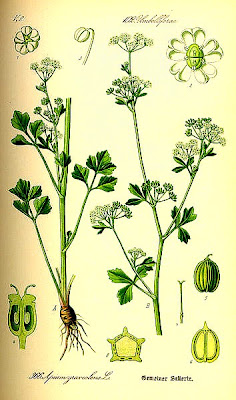
A good detoxification remedy, celery stem, leaf, and seed stimulate the kidneys to clear waste products, especially helping to cleanse salts that accumulate in joints, causing stiffness and inflammation. Although celery today is considered to be a mild sedative, in earlier times it was believed to be an aphrodisiac.
Angelica / Angelica archangelica

The botanical name of angelica points to the highly prized status of this northern European herb in the past. A warming tonic that is good for both poor digestion and weak circulation, angelica is also an excellent remedy to support recovery from chronic illness and to revitalize a delicate digestive system.
30.9.09
Marshmallow / Althea officinalis
Garlic / Allium sativum

One of the world’s most important medicinal plants, garlic is also one of the most researched, with over 1,000 published papers investigating its therapeutic activity. Folklore has it that garlic protects against the devil and vampires, beliefs that attest to its power as a medicine, particularly in countering infection.
Chiretta / Andrographis paniculata
29.9.09
Horse chestnut / Aesculus hippocastanum
Yarrow / Achillea millefolium
28.9.09
Ginger / Zingiber officinalis

The warm taste of ginger, one of the most versatile of all spices, adds zest to any herbal infusion. Taken on its own, it stimulates circulation to the skin, promotes sweating and relieves nausea. Combine fresh root with garlic and honey to bring quick
relief to colds and flu and settle stomach upset.
Senna / Cassia spp.
A well-known herb, senna grows in much of North Africa, the Middle East, and India, and its use has become almost universal. It was first used by Arab physicians in the 9th century ce. With its strong laxative action, senna makes an effective short-term treatment for constipation.
Subscribe to:
Posts (Atom)


